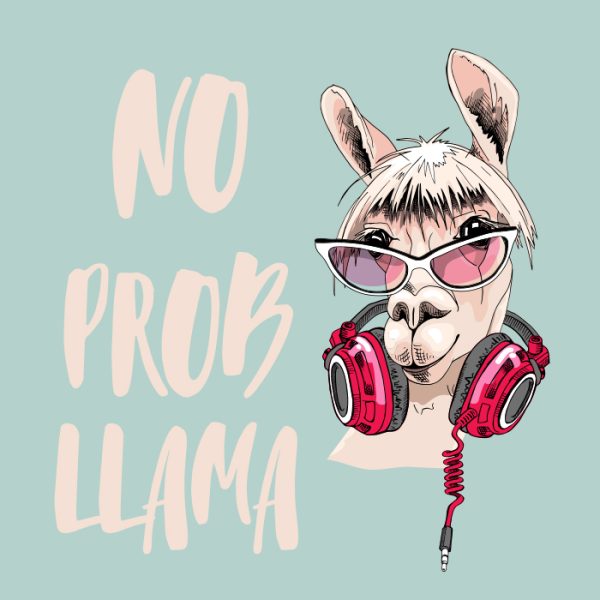Bilingual children’s books are more than pages of simple text and colorful illustrations—they’re bridges connecting kids to a world of languages, cultures, history, and endless possibilities, making them invaluable children’s books. For young readers, these books are a passport to exploring different words, new perspectives, and the beauty of diverse traditions. But for parents and educators, they’re tools for nurturing empathy, curiosity, and vital language skills that last a lifetime.
As the world becomes more interconnected, the demand for bilingual books has never been greater. Families seeking to preserve their heritage, parents wanting to give their kids a head start, and teachers excited about introducing two languages in the classroom are all driving the rise of these books. From introducing toddlers to their first words in Spanish or Chinese to celebrating the vibrancy of Latin American culture through a heartwarming story, bilingual books are making their mark.
Creating a bilingual children’s book isn’t just an artistic endeavor; it’s a chance to empower a new generation of global citizens. Whether you’re inspired by your parent or own multilingual roots or simply want to share the joy of language learning, crafting a book that speaks to young readers in two languages is as rewarding as it is impactful. Let’s explore how to make this dream a reality.

Understanding the Importance of Bilingual Books
Bilingual books play a crucial role in promoting language skills and cultural connection in young readers. By exposing children to two languages, these books help them develop a stronger understanding of their heritage and others and improve their language skills. Research has shown that bilingual children often exhibit enhanced cognitive abilities, better academic performance, and greater career opportunities. Moreover, bilingual books serve as bridges between different cultures, fostering empathy, understanding, and appreciation for diversity.
Your Publishing Journey Awaits – Start NowImagine a child reading a bilingual book that introduces them to the vibrant traditions of Latin America. Not only do they learn new words in Spanish, but they also gain insights into a rich cultural tapestry. This dual exposure helps children appreciate the beauty of diversity and cultivates a sense of global citizenship from an early age. In a world that is increasingly interconnected, bilingual books are invaluable tools for nurturing well-rounded, culturally aware individuals.
Two Languages, Double the Magic
What’s better than teaching kids a language? Teaching them two languages—and doing it through the joy of good children’s books. Bilingual children’s books aren’t just delightful; they’re powerful tools for growth. They introduce kids to the sounds and rhythms of multiple languages, helping them build foundational language skills while expanding their mental agility. Studies show that children exposed to two languages early on develop stronger problem-solving abilities, better memory retention, and even greater creativity.
For example, take Maria, a five-year-old who grew up reading both English and Spanish books. By the time she entered kindergarten, she could not only switch between languages with ease but also pick up on cultural nuances that her monolingual peers hadn’t yet encountered. Bilingual reading gives kids like Maria a head start—not just academically but socially, too.
But bilingual books go beyond learning words; they foster a love for diverse cultures. A child exploring a book about Latin American traditions or French foods learns to appreciate both the similarities and differences between their world and others. These stories connect young readers to global perspectives, fostering empathy and inclusion.
In a multicultural world, bilingual children’s books are magic keys, opening doors to understanding, growth, and a lifelong love and appreciation for exploring the world’s rich tapestry of languages and cultures.
From First Words to Heartwarming Stories
Every great bilingual children’s book starts with a story that speaks to kids in any language, making them essential children’s books. Whether it’s a playful tale about animals, an adventurous journey, or a sweet bedtime story, the key is to create something universally engaging yet culturally rich. Aim for themes that resonate across cultures, such as family, friendship, or exploration, and keep the language simple and approachable for young readers.
Choosing your language pair is the next big step. Popular combinations like English-Spanish, English-Chinese, or English-French are impactful because they cater to large multilingual audiences. For example, English-Spanish books connect communities across the Americas, while English-Chinese titles appeal to families embracing both global and cultural roots. Keep in mind the communities you want to reach and the language skills you hope to nurture.
Cultural authenticity is crucial when weaving elements like Latin American traditions, Chinese New Year customs, or French cuisine into your book. If your story includes vibrant illustrations of Mexican markets or French cafés, do your research or collaborate with cultural consultants to ensure accuracy. Details matter—whether it’s capturing the right shades for a bright folkloric outfit or using culturally appropriate idioms in your text.
The heart of a bilingual book lies in its ability to teach while delighting. When done right, your story becomes a gift that celebrates the beauty of two languages and the cultures that bring them to life.
Simple Text, Big Impact
When it comes to crafting the text for bilingual children’s books, simplicity is key—but simplicity doesn’t mean dull. The best bilingual books use simple text to engage young readers, teach them new words, and spark their curiosity. Think of clear, rhythmic sentences that are easy to follow, paired with repetition to reinforce vocabulary. For example, “The cat sleeps. El gato duerme.” Simple yet effective!
Translation is an art, not a mechanical process. A word-for-word swap may miss the nuances of emotion, rhythm, or cultural meaning that make a story magical. Instead, focus on preserving the spirit of the story. For example, an English phrase like “a cozy home” might translate to something culturally specific like “un hogar acogedor” in Spanish—conveying the same warmth while resonating with Spanish-speaking readers. Collaborating with skilled translators or native speakers is essential for maintaining authenticity.
Consider the structure of your bilingual text. A common and effective layout is side-by-side translation, where each line or sentence appears in both languages, making it easy for readers to compare. Alternatively, alternating pages dedicate one page to each language, creating a seamless flow for bilingual readers. Whichever format you choose, ensure the layout supports a natural reading experience.
Grading your language is essential to the understanding and memorability of a child’s lingual education. When done thoughtfully, your text becomes a bridge between languages, making the learning process fun, educational, and memorable for young readers.

Colorful Illustrations, Universal Appeal
For bilingual children’s books, vibrant illustrations do more than just catch the eye—they become a language all their own. Children are naturally visual learners, and engaging artwork can help them grasp new words and concepts without needing a translator. A curious child may not know the word “mariposa,” but a bright, detailed butterfly illustration bridges the gap, turning learning into discovery. When learning new words in different languages, the addition of a colorful and creative image can contribute incredible weight to a child’s understanding of the language as a whole.
Your Publishing Journey Awaits – Start NowTo create artwork that resonates, reflect the cultural beauty tied to your title or story. If your book explores Latin America, for instance, use bold, bright colors and imagery like festive markets, traditional textiles, or lush rainforests. For a book featuring French culture, evoke the charm of cobblestone streets or a quaint café. Authentic details help children appreciate the uniqueness of different cultures while finding universal connections. Collaborating with illustrators familiar with the culture is a great way to ensure accuracy and richness.
Whether it’s a family walking through a colorful village or animals introducing the ABCs, illustrations turn abstract concepts into tangible, relatable visuals. They amplify the story’s emotion and keep children engaged from start to finish. By combining language with stunning visuals, your book becomes an immersive, joyful learning tool—one that kids will return to again and again.
Designing and Formatting Your Book
When designing and formatting a bilingual book, it’s essential to consider the needs of young readers. Colorful illustrations and engaging graphics can help capture their attention and make the learning process more enjoyable. A well-designed board book can be an excellent way to introduce children to their first words and phrases in two languages. Consider using a format that allows for easy navigation and comprehension, such as side-by-side translations or illustrations that complement the text.
For instance, a bilingual book featuring a playful story about animals can use vibrant illustrations to depict each animal, with their names written in both languages. This visual aid not only makes the book more appealing but also reinforces language learning. The format should be intuitive, allowing children to easily switch between languages and understand the context. Whether it’s a board book for toddlers or a picture book for older children, the design should enhance the reading experience and support language acquisition.
Pages That Pop and Speak
Designing bilingual children’s books is as much about visuals and layout as it is about the story. Kids (and their parents) are drawn to books that are easy to navigate, visually exciting, and comfortable to read aloud. The trick is to create pages that pop while maintaining a clear, reader-friendly flow.
Start with the basics: easy-to-read text. Choose large, child-friendly fonts, and avoid cluttered layouts. Position bilingual text in a way that feels natural—whether it’s side-by-side, top-and-bottom, or alternating pages. Pair the text with engaging visuals that complement the story rather than overwhelm it. Every image should enhance understanding, especially for first books aimed at teaching basic concepts like numbers, shapes, or emotions.
The format matters, too. For babies and toddlers, board books with thick, durable pages and simple vocabulary are perfect for little hands (and mouths!) to explore. Older children gravitate toward picture books with more elaborate illustrations and slightly more complex text. Consider interactive elements like flaps or textured pages to make learning even more fun.
Finally, think about balance. A bilingual book should offer something for everyone. For kids, make it colorful, engaging, and age-appropriate. For parents, ensure the text flows well in both languages, making read-aloud sessions smooth and enjoyable.
Translating and Editing Your Manuscript
Translating and editing a bilingual manuscript requires careful attention to detail and cultural sensitivity. It’s essential to work with a qualified translator who is familiar with the nuances of both languages and cultures. Ensure that the translation is accurate, natural-sounding, and faithful to the original text. Editing is also crucial to ensure that the text is free of errors, flows smoothly, and is engaging for young readers.
For example, a heartwarming story about a family celebration should retain its emotional impact in both languages. A skilled translator will capture the essence of the story, ensuring that cultural references are appropriately adapted. After translation, thorough editing will polish the text, making sure it resonates with young readers and maintains the charm of the original narrative. This meticulous process ensures that the bilingual book is both educational and enjoyable.
From Concept to Classroom
Getting your bilingual children’s book into the hands of young readers is a journey that starts with choosing the right publishing path. You can either self-publish or pitch to publishers specializing in bilingual children’s books. Self-publishing platforms like Amazon KDP give you control over the process, from selecting your book format to setting your own price. Companies like Spines can provide that support as well as help you through the publishing process and even assisting with the translation. If you’re aiming for traditional publishing, research publishers who focus on diverse or multilingual audiences and tailor your pitch to showcase how your book aligns with their mission.
Pricing is key to making your book accessible while ensuring a fair return. Research similar bilingual children’s books to determine a competitive price. For example, board books for toddlers might fall in the $8–$12 price range, while picture books for older children typically range from $12–$18.
Marketing your book effectively ensures it reaches the right audience. Families and teachers are always looking for engaging, educational books, so target them directly. Build an online presence through a website or social media platforms, sharing behind-the-scenes content like illustration previews or cultural inspirations. Partner with schools and community events for readings and workshops, or reach out to libraries and bookstores to stock your book.
A World of Words and Wonder
Bilingual children’s books do more than teach vocabulary—they open doors to a world of possibility. By introducing kids to multiple languages early on, these books give them a head start in developing cognitive skills, embracing diverse cultures, and building connections that transcend borders. Every page read in two languages is a step toward fostering empathy and curiosity in the next generation.
For aspiring authors, creating a bilingual book is more than a creative endeavor—it’s a chance to leave a lasting impact. Your words and illustrations could inspire a child’s love for reading, help a family preserve their heritage, or give a classroom of young minds the tools to explore the beauty of our multilingual world.
So, if you’ve been waiting for a sign to start your bilingual book journey, consider this your sign. The world needs more stories that speak to kids in multiple ways and multiple languages. As grown-ups, it’s our job to inspire curiosity about all the things, people, and places that surround them. Inspiring curiosity, adventure, investigation, questions, and the pursuit of answers through experience creates more aware and kind human beings. This world could use more and more of them every day. This can be done through art, music, literature, and all sorts of mediums that appeal to curious minds. Who knows? The bilingual book you write today could be the one that changes how a child sees the world tomorrow.
Remember, the magic of bilingual books isn’t just in the words—it’s in the bridges they build. Ready to create yours? Visit spines.com and bring your story and first book to life. The world is waiting to read it.
Your Publishing Journey Awaits – Start Now







